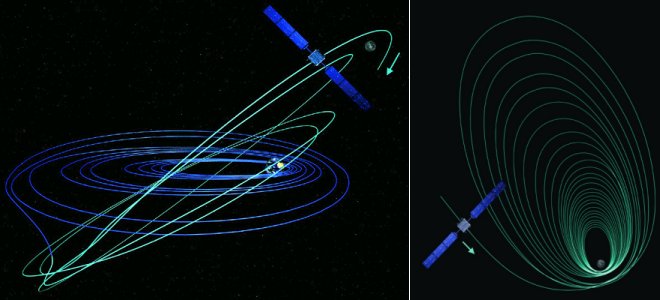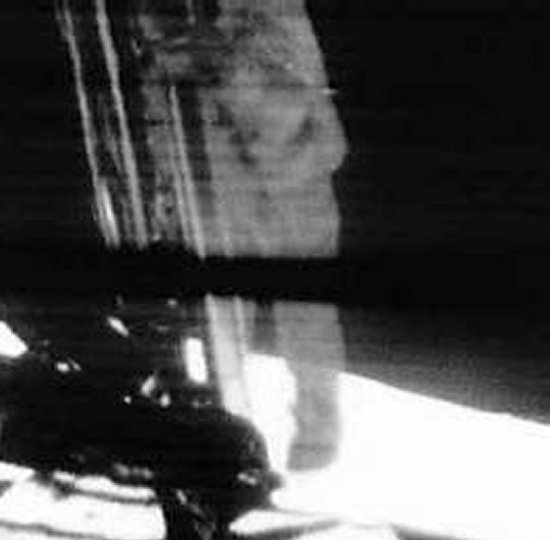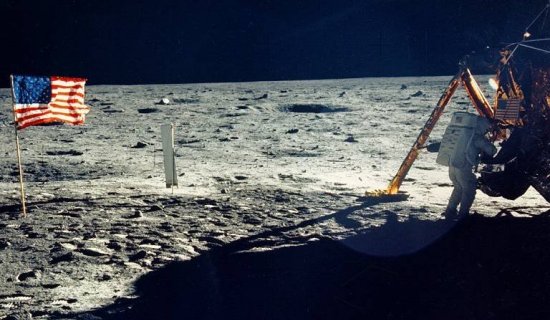|
||||||||||
|
|
||||||||||
|
||||||||||
|
|
||||||||||

Earth-based telescopes have similar difficulty trying to resolve manmade objects on the Moon. The best telescopic technology available today is interferometry that allows the images of multiple telescopes around the world to be combined together. In so doing, the multiple telescopes can produce higher-resolution imagery than a single telescope on its own. Unfortunately, even this capability is not yet sufficiently advanced to resolve objects as small as the Apollo landers. In order to see landers and other objects left on the Moon using present technology, it would be necessary to send a satellite to orbit the Moon that was equipped with high-resolution cameras. The cameras required would have to be comparable to those carried by military spy satellites or the civilian Ikonos satellite in Earth orbit.
A European spacecraft is currently doing just that. The probe SMART-1 is now conducting a detailed photographic survey of the Moon with high-resolution cameras capable of clearly seeing the Apollo landing sites. European scientists intend to use these and other sites of lunar landings by unmanned probes to help calibrate the instruments aboard SMART-1.

SMART-1 was launched in September 2003 and took about a year to enter orbit around the Moon. The reason the craft took so long to travel this distance is due to its propulsion system. Previous lunar missions have used conventional rocket engines that generate a short, powerful force to accelerate a vehicle to the Moon. SMART-1 instead uses an ion engine that continuously produces a long, steady force over an extended period of time. This thrust force is much less than a normal rocket engine but far more efficient. The vehicle may take more time to reach its final destination but uses less fuel in the process.

As a result of its unique form of propulsion, SMART-1 took a long period of time and completed many orbits as it spiraled its way further and further from Earth until it was captured by the gravitational attraction of the Moon. The probe made its first close pass of the Moon in early 2005, but continues a series of lunar orbits as it spirals closer and closer to the surface. SMART-1 is imaging the Apollo landing sites and other notable locations during these tighter and tighter orbits, but it will likely take several months before the photos are resolved enough to show sufficient detail. Photos of these sites may start being released later this year and may end the infamous conspiracy theory that the lunar landings were a hoax once and for all.
The camera used to televise Neil Armstrong's first steps onto the lunar surface was mounted inside the base of the Apollo lander. It was located in a compartment called the Modular Equipment Storage Assembly, or MESA. This storage compartment contained much of the equipment and tools used by the astronauts on the Moon. The astronauts were located at the top of the lander in a capsule called the Lunar Excursion Module (LEM). The LEM included a hatch that opened to the outside and onto a flat surface called the porch. From here, an astronaut could descend the ladder leading to the base of the lander and the surface of the Moon.

As Armstrong crawled out of the LEM onto the porch, he pulled a D-ring that caused the MESA compartment to fold open. A TV camera mounted on the MESA was aimed so that it looked back towards the ladder in order to show Armstrong descending and take his first steps. The above photo shows the view of Armstrong broadcast to the world as seen from the MESA camera.

The above photo of the MESA itself shows Armstrong standing next to the lander and looking into the open MESA
compartment. This photo was obviously taken later in the mission, either by fellow astronaut Buzz Aldrin or by a
camera the astronauts had set up on the lunar surface.
- answer by Jeff Scott, 24 July 2005
Related Topics:
Read More Articles:


|
Aircraft | Design | Ask Us | Shop | Search |

|
|
| About Us | Contact Us | Copyright © 1997-2023 | |||
|
|
|||